MOAB, (4,042 alt., 883 pop.), seat of Grand County, is the commercial center of an extensive sheep and cattle country, and since 1930 has achieved importance as a point of departure for scenic attractions in southeastern Utah. Though isolated it has a small business district, selling everything from hay and gasoline to malted milk and liquor–the only “legal” liquor in the county. Squat red adobe houses stand neighbor to more pretentious firebrick houses. In the evening neon lights illuminate the business district, but after midnight, except on Saturdays, the town does a complete “blackout.” Moab has green trees, green lawns, green fields, but even this greenness comes from red soil.
It was once like that. This was Moab, Utah in 1940. In those long ago pre-war, pre-uranium boom days, one would have been hard pressed to find one in a million Americans who had even heard of the little Utah hamlet. Today they name sneakers and vitamin supplements, bombs and bikes, backpacks and boots, and even oversized tacos after the ‘mountain bike capital of the world.’
Moab has become, for better or worse, a brand and a global destination—synonymous with unbridled tourism, extreme recreation, runaway growth and the complications those labels bring. New Moab, in the 21st Century, for better or worse, has arrived.
Traces of the once quiet, remote little community survive if you search hard enough; there are remnants here and there, and finding them causes both pleasure and grief. On the one hand it’s comforting to know that something of the past has survived the passage of decades and a Brave New West; yet, those fragments also confront us with the World in 2017.
But that’s the way it’s always been. Everywhere. The world turns over, again and again, and shows little regard or regret for where it’s been or what it’s learned. Moab is a perfect example. Whether by design or circumstance, or luck, it has re-invented itself before. From an empty, pristine valley, to a sleepy backwater village, to a bustling mining town, to a tourist mecca, Moab keeps finding ways to cast off its history and start anew, to the pleasure of some and the despair of others.
In 2017, Moab, Utah is in the process of another incarnation. The signs have been there for years. To quote the great Al Jolsen…”You ain’t seen nothin’ yet.”
* * *
Growth and change are inevitable, no matter where we live. More than 15 years ago, an old realtor pal of mine complained that I had “a closed mind” when it came to Progress. I told him it depended on how he defined the word. Subsequently, I wrote a short essay trying to explain my concerns. In part, I wrote:
Progress is maintaining our small town atmosphere while recognizing that some change is inevitable, and that change can sometimes even be an improvement. Development is when the greed of its citizens allows uncontrolled growth that destroys all the qualities of small town life…the qualities that brought many of us here in the first place.
Progress is when a business flourishes and expands to meet a growing demand, while still maintaining the quality that caused its success in the first place. Development is when an out-of-town investor sees there’s money to be made and throws up another fast food franchise, taking business and customers away from the local cafes that have survived for years and years.
Progress is moving to Moab, wanting to be a part of the community and wanting to contribute something to it. Development is moving to Moab and seeing what can be taken from it.
Progress, in short, is Moab the Community. Development, in a nutshell, is Moab the Population Center. What’s the difference? Ten years from now, one way or the other, we’ll probably all know the answer.
Who benefits from “progress?” That’s the question that needs to be asked. When politicians and ‘developers’ push for more growth and expansion of a community, is it for the community that exists at that moment?
Moab is in the middle its next incarnation–Moab 5.0.
Its future, for the most part, is not being decided by the people who live and work there; instead, Moab’s destiny is being shaped by those with enough political power and/or financial wealth to transform Moab yet again, into something unrecognizable to most of its current citizens. They are, in effect, creating the next Moab—a city for the next population of residents, many of whom have no idea–at this moment—that Moab is even in their future.
But we’ve been down this freeway before. This isn’t Moab’s first upheaval; it’s worth the time to remember how Moab got from there… to here.
MOAB 1.0…5000? BCE – 1879
Humans were visiting the valley now called Moab for thousands of years before someone bothered to officially name it. There is archaeological evidence of habitation in the Moab Valley that dates back to 300 BCE. Native Americans passed through the area, hunted, gathered with other tribes,and grew crops here for centuries before white people arrived. Evidence of their presence, in the form of architecture, pottery, basketry and rock art is everywhere.Ute Indians settled the valley by the 18th century and developed a successful agricultural sustainable life for themselves.
Early white visitors discovered large farming plots and many signs of occupation. Spanish explorers crossed the valley, trappers like Denis Julien made their way along the Spanish Trail. But they had no interest in staying.
That changed briefly when President Brigham Young instructed a group of his Latter Day Saints to settle the region south of the Grand River as part of a plan to colonize much of the land the Mormons hoped would become The State of Deseret. The Elk Mountain Mission, led by Alfred Billings and a group of 40 missionaries left Manti in May 1855 with 15 wagons and provisions that included 14,000 pounds of flour, wheat, potatoes, farm implements and 200 pounds of lead and thousands of gun caps.
The Mormons were admonished by Young to create good relations with the Utes, but from the time they arrived in June, the distrust between the white pioneers and the Native Americans was palpable. The missionaries built a fort, planted crops and planned to stay, but the situation deteriorated over the summer and in late September, three members of the party were shot and killed by Ute warriors. The Mormons decided to leave. Gathering what provisions they could quickly assemble, the Billings Party fled north across the river. The Elk Mountain Mission ended almost as fast as it had started.
For the next 25 years, the Moab Valley returned to “normal.”
MOAB 2.0…1880-1952
But it wouldn’t last. The immigration of white Americans to the West grew steadily, especially after the discovery of gold in California. To Native Americans, the influx from the East seemed unending. The Northern Paiute woman Sarah Winnemucca had written:
“My father told of a fearful dream. He said, ‘I dreamt I saw the greatest migration that has yet been through our country. I looked North, and South, and East, and West, and I saw nothing but dust. And I heard a great weeping…
‘Oh my dear children, you may all think it is only a dream…but I fear it will come to pass.’”
While the Mormons failed to send another mission to southeast Utah for 30 years, now a migration of white settlers, miners and cattlemen began to occupy the valley and the high wooded country above Moab in the La Sal Mountains. As always the Native Americans were eventually pushed from their ancestral lands and restricted to reservations. Even the promised reservations themselves were compromised or reneged upon.
It is a sad and unavoidable fact of history that Native Americans played little if any role in the eventual public lands debate or the white settlement of the American West. Indian wars raged for decades. In southeast Utah, Native Americans continued to lose their homes and their lands until “uprisings” became infrequent and then non-existent. They still refer to Chief Posey’s ill-fated
rebellion (he died in the process) as ‘The Last Indian War.” It could be fairly argued that the Ute Indians in Spanish Valley were the first occupants of that land to be pushed aside by more powerful “outsiders.”
In southeast Utah, white settlers in the upper end of Spanish Valley petitioned for the region’s first post office, to be called Plainfield. But many more moved into the lower end of the valley, nearer to the river. In March 1880, a post office was established as Moab, Utah.
From that small post office, Moab set out to become a town. A street grid was created, roads were improved, merchants came to establish a variety of stores that provided needed products and services. Moabites certainly “shopped local”— the closest city, Grand Junction, Colorado, was a four day ride over some of the worst roads in the West. By 1890, census data shows that Moab had grown to more than 300 residents.
Farmers planted orchards, ranchers established and expanded herds of cattle and sheep. Two newspapers began reporting the events of the town and the world, and then merged into one weekly.
Opportunities for oil and gas extraction and other mining opportunities were frequently discussed in the pages of the Times-Independent, and dreams of Moab becoming the energy capital of the West were often promoted. Even a road over the Book Cliffs to Uintah County was planned and promoted. Most of these dreams failed.
And there were was a realization, as Moab approached the 1930s, that the brilliant redrock landscape of southeast Utah had a scenic value that others failed to grasp. Cowboys called the Arches country “an awful place to lose a cow.” But others, like Bish Taylor and ‘Doc’ Williams worked to promote its tourist potential.
Still, despite their efforts, Moab and vicinity remained a quiet, self-sustaining backwater community for almost 75 years. Visitation at Arches NM rarely passed a thousand visitors a year. The population of Moab grew from 330 in 1890 to about 800 in 1950. It seemed as if it might stay like that forever…
MOAB 3.0…1952-1988
And then, on July 6, 1952, Charlie Steen discovered uranium pitchblende in a place all the geologists said it didn’t exist. Steen became a multi-millionaire and Moab would never be the same again.
World War II gave us the atomic bomb and a sudden interest in uranium. They say the material for the Hiroshima blast came from the Yellow Cat region north of town. After the war the government established the Atomic Energy Commission (AEC) and in 1951, it not only provided price guarantees for uranium ore, it promised to buy whatever was delivered to the government for the next eight years. The Uranium Boom was on.
But it was Steen’s remarkable discovery that turned Moab on its head. Steen was down to his last drill bit and his last dollar. When core samples in the back of his truck caused a nearby Geiger counter to fly off the scale, Charlie Steen knew he was about to become a very rich man.
News of his discovery spread across the country. Thousands of men, families in two, raced to southeast Utah, all of them eager to make their own fortunes. Moab was unprepared for the invasion. Its had been home to 800 quiet souls. Now the population leaped to more than 5000 in a matter of a year. Moab was overwhelmed. New residents lined up for blocks to use Moab’s only pay phone. Cafes couldn’t meet demand. The grocery ran out of food. Houses, to rent or buy, simply did not exist.
The demand for goods and services set off a construction boom in Grand County that would not be witnessed again for 50 years. New subdivisions were built, as well as new schools, churches, restaurants, markets. A young man named Milt Galbraith and his wife Audrey came to Moab to start a small cafe. Milt borrowed $5000 to create “Milt’s Stop n’ Eat.” He paid off the debt in a year.
The Uranium Boom changed Moab. No doubt some of its longtime residents were none too thrilled to see their home land invaded. Others saw an opportunity. Then as now, those who could afford to take advantage of the boom–those with the capital and the property and the expertise— did so. The rest adapted as best they could.
By the mid-50s, the problems associated with the boom became more obvious as schools went on double shifts to accommodate the startling increase of the student population. City services were taxed to the limit. Some wondered if the increased wealth of the community matched its growing list of headaches. Then, as now, no real solutions were found.
In the late 1960s, the boom slowed. The AEC reduced its uranium ore quotas and would no longer offer price guarantees. Other mining and energy operations like the the Texas Gulf potash mine and the Atlas mill continued to provide steady employment, but the Glory Days were gone.
Three Mile Island and a collapse in uranium prices led to the permanent closure of the Atlas Mill in 1984. The town collapsed. A fourth of the town’s homes were for sale and at rock bottom prices. The community’s leaders sought ways to rekindle the economy and they turned to the kinds of industries that had worked in the past.
When the department of Energy proposed to construct a high level nuclear waste facility near Canyonlands National Park, Moab voters supported the idea by a 2 to 1 margin. Eventually, however, DOE rejected the site. Moab began to look like a ghost town.
Then in 1987, the county proposed to amend a commercial zoning plan to accommodate a planned toxic waste incinerator near Cisco, 40 miles upriver from Moab. None of the commissioners realized how dramatically the demographics of the community had changed in just a few years. They assumed there’d be broad support for the plan which was intended to generate significant new taxes for the county. They were stunned to encounter stiff opposition from Moab’s newer residents. When the zone change was put to a vote via referendum, the incinerator was stopped dead.
Opponents of the incinerator were delighted, though few of us gave much thought to the lost tax revenues or how the county would recover its tax base. A 1987 article in the Moab weekly noted that, “Mountain Biking was becoming a popular sport in SE Utah,” but personally, I never thought it would catch on…
MOAB 4.0…1988-2010
“New Moab” was born. The sport of mountain biking exploded upon southeast Utah. National publicity placed Moab in the spotlight as a recreational mecca. Out of town investors, particularly a cadre of deep pocketed transplants from Park City, Utah came to Moab. The old Atomic Motel became the Kokopelli Lodge. Ray Tibbetts’ Budget Family Clothing store became the Grand Emporium. The old City Market store was abandoned and a new larger version was built across the street. When Moabites saw the new expanded parking lot, they laughed— “They’ll never fill a lot that large,” we chuckled. “What a waste of asphalt.”
McDonalds came to Moab. And Denny’s. And Wendy’s. And Subway. The Westerner Grill and the Canyonlands Cafe went out of business. Seven new motels were built over the span of one winter (1992-93). New condo developments replaced alfalfa fields and horse pastures. Housing prices skyrocketed. We called it Moab’s Pork Belly Housing Boom.
New Moab grew in spurts. As visitation at the national parks skyrocketed, so would accompanying tourist infrastructure. But then the construction growth would get ahead of the visitor growth and the economy would plateau. Motels and restaurants would see their share of the pie reduced and they’d demand more promotion. And they’d get it. And more people would come…and then more construction growth…repeat process, over and over.
As the pastures and fields gave way to more real estate developments, Moabites almost became numb to the changes. And many liked the growth. They looked at alfalfa fields and only saw a marginal use of the land and a waste of water. All those center pivot irrigation systems were an outrage. The changes kept coming at a steady rate.
And then something different happened…
MOAB 5.0…THE FUTURE WAS WRITTEN, TEN YEARS AGO…
The precursor to Moab 5.0 came with the Millennium and it was called “Cloudrock,” and nobody in the Moab Valley had ever seen anything like this before. This ‘housing development’ wasn’t just another condo scheme that would offer units for sale at $150K or so, and assure its buyers that they’d be able to flip it for a clean profit in a few years. No, this plan took Moab to another realm.
A corporation called the Mesa Land Company privately published a “Development Proposal to the State Institutional Trust Lands Administration.” It soon went public. In their prospectus, they explained:
“Our intention is to create a world-class wilderness destination resort community in the American Southwest for people who enjoy the natural beauty and cultural legacy of this region…The centerpiece of this community is Cloudrock Desert Lodge, an intimate luxury wilderness lodge that will set the tone and standard for the entire development. Our initial marketing efforts will focus on establishing an international awareness of Cloudrock and its location in Southeastern Utah.”
And the company added:
“We will use a highly targeted approach, planning intimate get-togethers at the homes of our friends and initial clients, as many second-home real estate purchasers are often as interested in who their eventual neighbors might be as in the property itself.”
The luxury lodge targeted very high-end customers. Lots for the residential component of Cloudrock were to start at $600,000. It was to be a refuge for the One Per Cent.
Cloudrock was hotly debated at first. A group called The Moab Citizens’ Alliance actively campaigned against the grandiose scheme for a while. But slowly, opposition from the general public faded, though a small group of opponents contested Cloudrock via the legal system. Though Cloudrock would be visible from nearby wilderness study areas, mainstream environmentalists offered little or no resistance.
In fact, by the late 1990s, opposition by environmentalists to ANY recreation or amenities-based economic growth came to a screeching halt. Though groups like SUWA and the Grand Canyon Trust previously addressed these kinds of impacts, now their strategy took a 180 degree turn.
The Sierra Club in Moab offered tepid opposition at first, noting that, “It is our consensus that the best thing for Johnson’s is no development at all.” Having said that, however, the Club had no intention of putting up a fight. “We realize you are making efforts to ensure that Cloudrock meets standards above and beyond Grand County’s. Never the less, we hope you will be receptive to our concerns…”
What kind of concerns did the Sierra Club have and what were their requests? Besides setting structures farther back from the rim of the canyon, the Club made the following requests: “coloring roads to match the surrounding soil…parking lots colored to match the surrounding soil…utilizing medium to darker earth-tones, and non-reflective materials on all structures…outdoor lighting should be kept to a minimum…” They cosmetic in nature.
The Sierra Club also encouraged restrictions on OHVs. They wrote, ”Next to cows, (this is) the most damaging thing currently happening on the mesa. Please be explicit in not permitting their use on the mesa.” For them, keeping out cows and OHVs was an acceptable trade-off for a massive multi-million dollar “wilderness” resort lodge and scores of condos and homes built on $600,000 lots.
This was from the late 1990s. Perhaps just as damaging to the community’s future was the stunning reality that a generation of new environmentalists, then in their late teens or early twenties, would never again hear a serious fact-based discussion on the impacts that a tourist-based economy can wreak on rural communities and the lands around them. It’s why today, so many paid environmentalists, now assuming leadership roles in the green movement, simply glaze over or shrug when these kinds of issues are thrust into their sheltered realities—they have no idea what we are talking about, because they were never allowed to consider both sides of the debate. A 20 years news blackout by their mentors served them poorly.
As for Cloudrock, the process went on for years. Its corporate owners built up staggering debts and sold their venture to another corporation. Then the country and the world was hit by the Great Recession of 2009 and Cloudrock withered on the vine. But it had a profound effect on the community and few realized it. A few years before longtime Moabite and activist Lance Christie passed away, we had a long talk about Cloudrock and he made an interesting observation.
In 2001, I had speculated in the Zephyr that if Cloudrock were built, housing prices in Moab and Grand County would skyrocket. I wrote:
“The Cloudrock developer is saying that building lots for homesites will start at $600,000. These homesites are just up the hill from existing homes and privately owned acreage in Spanish Valley. Inevitably, it will take just one property owner out there to start comparing relative market values.
“He’ll say to himself, “Ok…if Cloudrock land sells for $600,000, mine has to be worth at least $400,000.” Realtors will shake their heads and privately question the sanity of the seller, because they’re convinced that the property is seriously over-priced. But inevitably, a visitor from New York or Los Angeles or Aspen–wherever–someone will discover the ‘for sale’ sign, think it’s a good deal or a good investment or a fun way to spend their pocket money on a Monday morning and will sign on the dotted line.
“From that moment, every nearby landowner will assume that his property has a comparable value.. And then we’ll begin to see real estate prices escalate all across and up and down the valley. When that happens, that is when we’ll see the County Assessor out there with a calculator, reevaluating land values and taxes will start to climb accordingly.”
The project was never built, but as Christie pointed out, the “Cloudrock Effect” as he called it, was felt anyway. Home prices in Moab almost doubled between 2001 and 2007. There was an assumption, he theorized, that for the first time in ther minds of developers and financiers, Moab could become another high-end destination resort community. The fact that a plan like Cloudrock could have come so close to fruition was the proof.
Since 2011, as Moab and the country emerged from the Great Recession the race to 5.0 has been relentless. High end motels and hotels are being built at a staggering rate. A new sewer system will eventually allow the community to double in size. Affordable housing for the working class remains an almost unresolvable issue as the price of housing and even vacant land continues to escalate beyond the reach of middle income earners.
The consequence of all this uncontrolled expansion has made Moab the poster child for how NOT to be come a New West town. In a recent High Country News essay, Luther Probst, the board chairman of the Outdoor Alliance, insisted that recreation-based communities can, “develop a balanced economy while avoiding the excessive tourism and commercial growth that characterizes nearby Moab.”
Nobody wants to be like Moab.
And yet, as both a consequence and a reward of the community’s transformation and subsequent reputation, almost everyone, it seems, is prepared to embrace Moab’s next incarnation.
Years ago, Utah State University announced plans to pursue a full-time campus in Moab that will allow its 20 acre campus to grow steadily, to 600 and ultimately to as many as 3500 students in 25 years. There seems to be little opposition to this kind of dramatic increase in Moab’s population and the idea is gaining more strength by the day.
At one point, Utah State University boosted the future of its Moab campus like this:
There is a bumper sticker seen on numerous cars that says, London, Paris, Tokyo, Moab? Moab is a destination location, locally, nationally, and internationally, as a must see, and should be on your bucket list. I am optimistic that higher education at Utah State University Moab, will draw a similar response in the not too distant future. USU Moab is becoming a world class education center in one of the most beautiful and diverse outdoor recreation locations in the world.
While it’s difficult to understand the connection between Moab’s ascension to world-class “must-see” status and seeking an education, the fact is, Moab’s current reputation makes the idea of a university (and almost exponential growth) very lucrative.
How would a full-time university with a student population of 3500, or even half that number, change Moab? USU notes that in addition to providing, “an important opportunity to help higher education thrive… It will improve the community in a way that will enhance long-term employment opportunities, diversify and grow the economy and provide young people with an expanded vision of what the future could hold for them.”
In 2012 USU published a Master Plan for the university. It offers a variety of scenarios, based on various rates of growth. It’s an important document to study.
Some of the plan, if implemented, could actually shift the core of Moab to the campus location, a couple miles south of its business district. The 40 acres of land upon which the university will be built was originally owned by the State Institutional Trust Lands Administration (SITLA), but the adjacent SITLA property will also be developed and administered for commercial and residential growth.
Here are some of the details from the Master Plan, if their high end scenario played out. These are projections looking two decades ahead:
* The USU campus will ultimately require the construction of facilities totaling 436,000 square feet.
* Campus parking will require 1032 spaces.
* It is estimated that the university and associated SITLA development will generate 8,081 vehicular trips to and from the campus each day.
* A “head count” of projected growth at the university believes that based on a variable of 10-14%, could be as low as 2286 persons in 25 years and as high as 6674.
* The report states that there could be “years of rapid growth” on the campus, “growth spurts,” followed by a “leveling off in the future, which will correspond to absorption of the local market and the growth rates of Moab and Grand County.”
* On adjacent SITLA land, the plan calls for the following development:
* 11 acres for 270 student housing units
* 26 acres for 510 multi-family units
* 24 acres for 95 single family units
* The plan also calls for a 200,000 square foot commercial development, ie shopping center.
* Estimated daily water use: USU Campus—27,100 gallons; SITLA development—330,960 gallons
These numbers only reflect the development of the SITLA and USU lands. It does not take into account the associated growth of Moab and Grand County that would naturally follow the implementation of a USU campus of this magnitude. Where that kind of growth will lead Moab to, as the 21st Century moves forward, one can only ponder. But somewhere out there, Moab 6.0 lurks, ready to take the town to the next level.
BOTTOM LINES
Whatever happens to Moab and other communities like it is probably inevitable. If there is really a city or town out there, large or small, that has successfully managed its growth to the satisfaction of its citizens, particularly when the growth is external, I’d like to hear about it.
But the fact is, community leaders, political or business, anywhere, have always reflexively jumped at the opportunity to embrace economic growth. The more, the better. There is no such thing as too much of it. It’s as if their hunger for more growth is in their genetic code.
One can be a leader of the most unassuming, small town in rural America, with the kind of quiet, carefree qualities that most of us only dream of—the perfect Shangri La—with the kinds of “small town” intangible aspects that can never be measured quantitatively.
But then…go tell its mayor and council and its Chamber of Commerce that Toyota wants to build an assembly plant on Bob Hinchman’s dairy farm, that it will bring 5000 new jobs to the county and instantly increase their tax base, and they’ll fall all over themselves to make the deal. And so, most likely, will Bob.
(Change the incentive from an auto plant to a massive recreation based facility, or a ‘wilderness lodge’ or anything that might remotely please the outdoor industry and even environmentalists will drop their opposition. The fact is, in 2017, not a single well-funded non-profit organization actively and publicly opposes any of the growth or impacts that Moab now faces.)
Whatever the nature of the next ‘Big Thing,’ it’s true that many of these community leaders’ actions are well-intentioned; they think they have the best interests of their citizens in mind when they pursue this kind of transformational change. Others are driven by their own egos and the desire to “leave their mark.” In Moab, as everywhere, I’m sure there’s been a bit of both.
But while virtually all the movers and shakers who push for change in small towns will claim it’s good for their communities— the opposite is almost always the case. For the residents living in a small town when these kinds of transformations are planned and executed, the cost of those changes—social, financial and cultural—falls upon them, whether they like it or not.
It’s fair to ask the logical question…Does anyone living in Moab now, who was there 25 years ago, pay less in taxes than they did then? Does Moab feel like a better, safer, more comfortable place to live? Most will say ‘no.’
But there are others reading this article, who are relatively new to Moab, who see the town with fresh eyes, who never knew ‘Old Moab,’ and who who may have hated its remoteness and lack of amenities. They LOVE Moab 5.0 and can only scratch their heads and ask, ‘What is this guy complaining about?’
Remember this…In another ten years, give or take, as this version of Moab lurches ahead to 6.0 or 7.0, many of those same people will be wringing their hands and pulling their hair and crying, “What has happened to our town?”
They will be next to shout that familiar refrain.
Jim Stiles is Founder and Co-Publisher of the Canyon Country Zephyr.

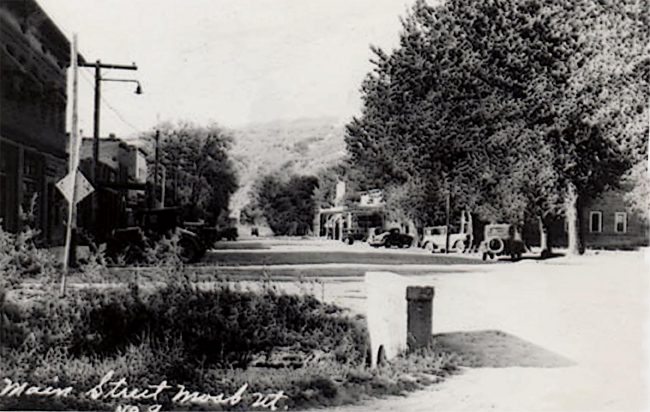
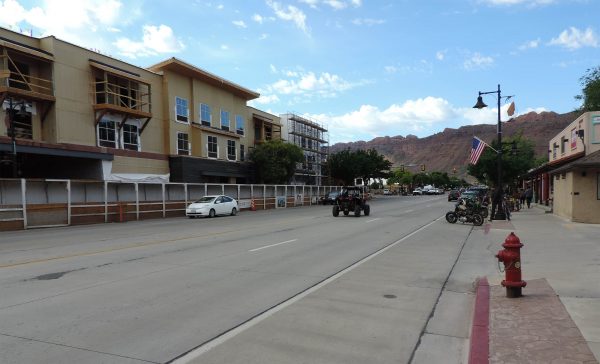
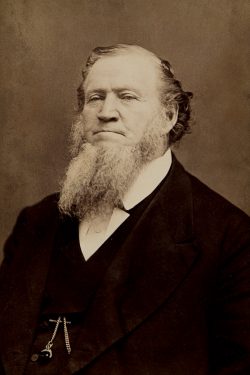
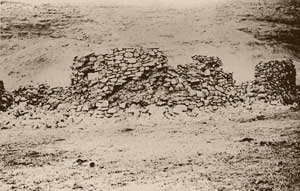
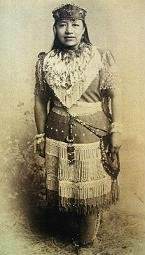
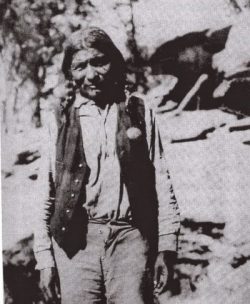
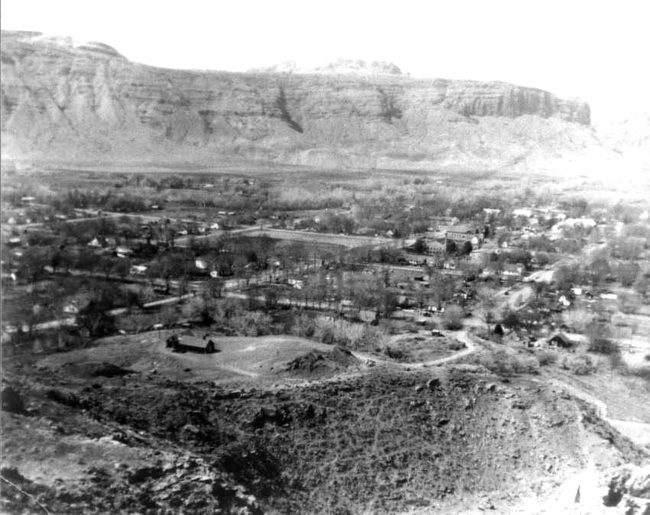
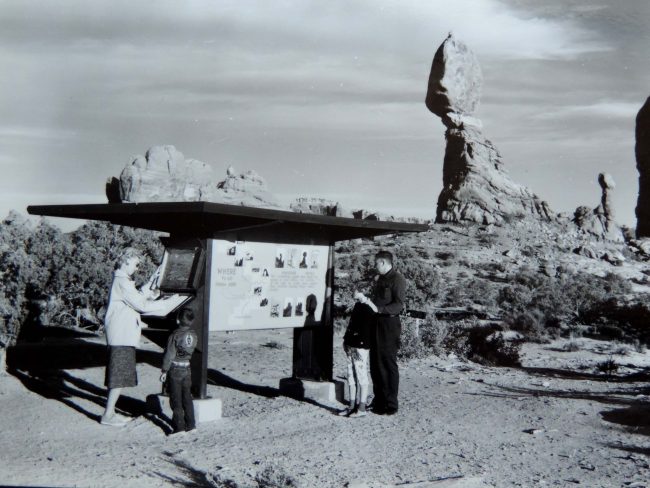
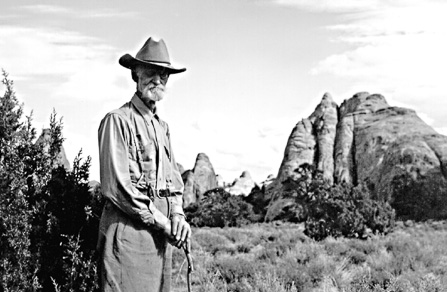
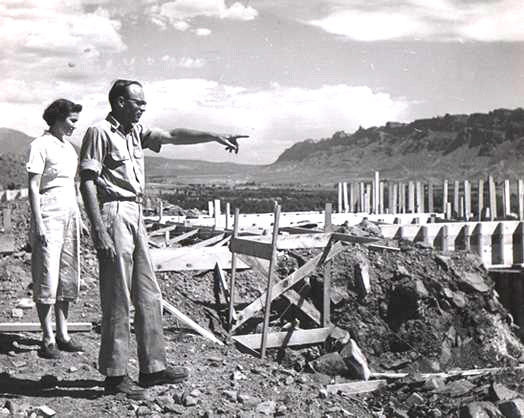
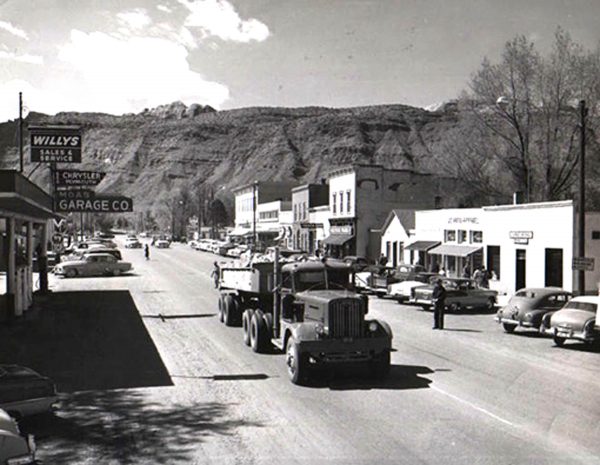
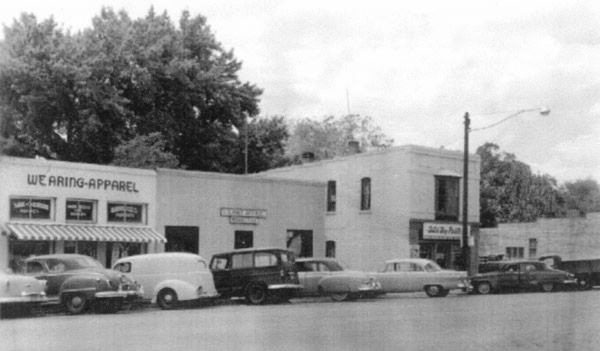
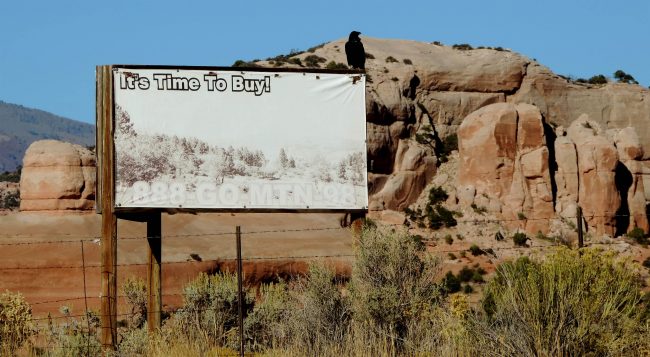
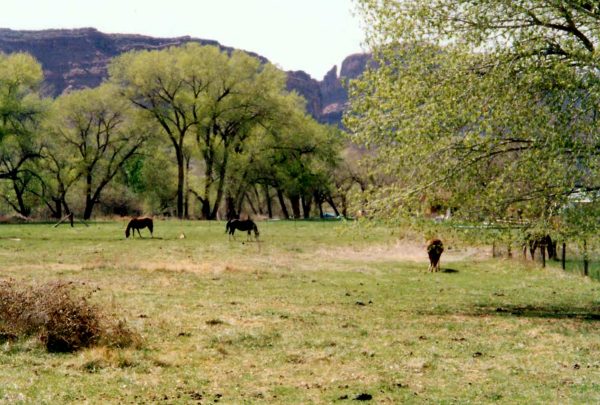
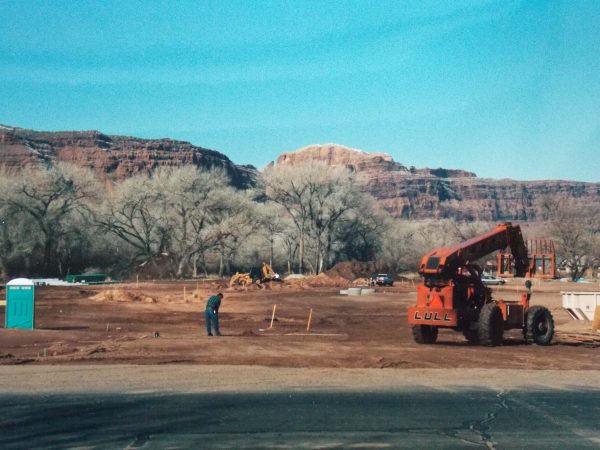
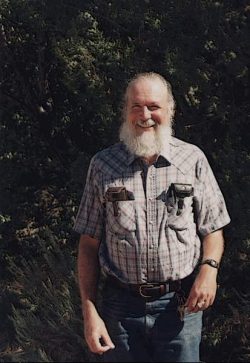
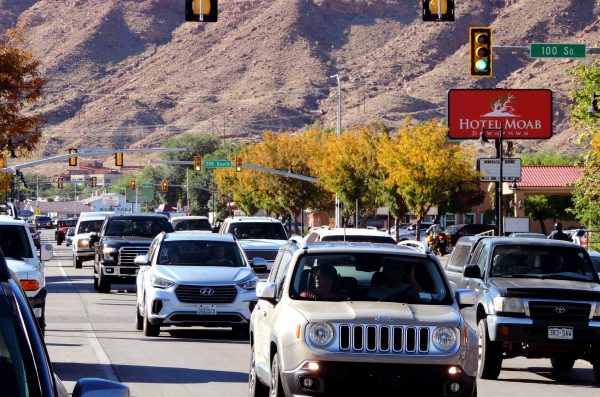
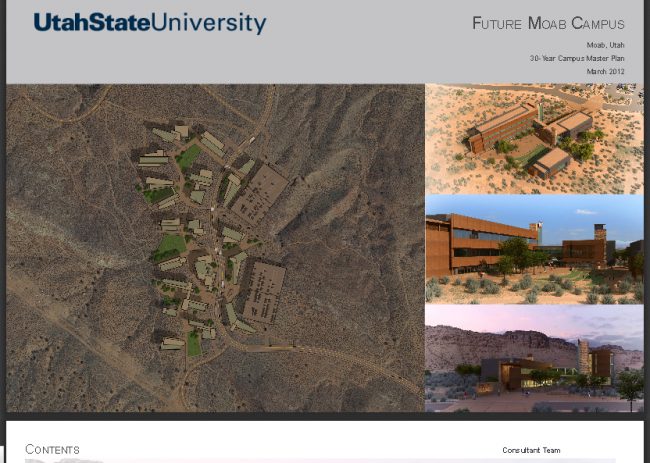
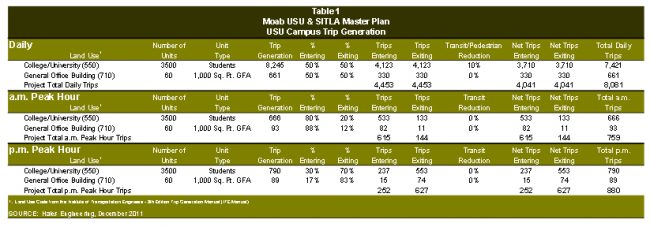
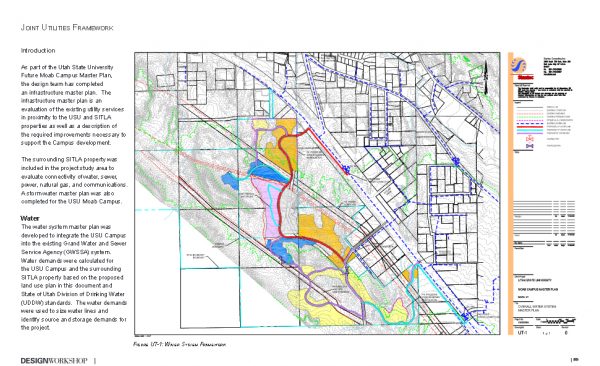

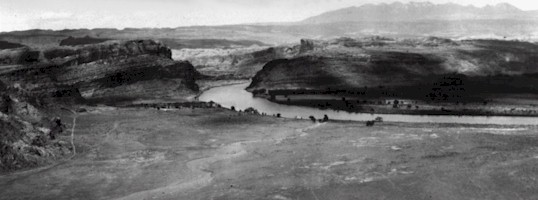
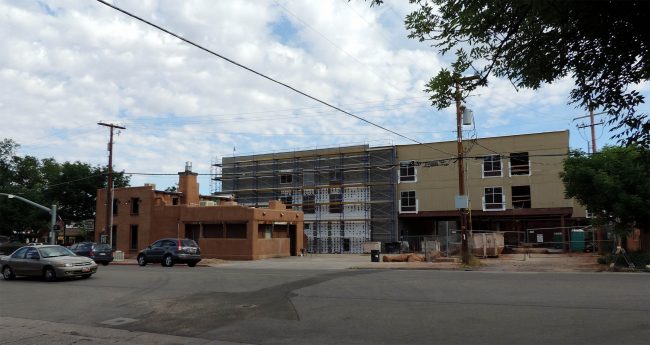





Great article Jim. Still have a lump in my throat. BTW, who is Tom McCourt? I didn’t know about his book regarding Bill Tibbetts. I was fortunate to spend time at Bill & Jewels “Horse
Thief Ranch” when I was young. She was an incredible cook and Bill was an amazing story teller. Fond memories indeed.
We first came to Moab in 1954, so I’ve seen the town develop for the last sixty plus years. That doesn’t make me a pioneer, but I’ve seen enough to absolutely agree with you. We have more entertainment, but less community. We have more work, but for low-income wages.We have more housing, but no one can afford it. More amenities, but tripled property taxes. And the Big One: more population, but where is the water going to come from? Before Moab hit The Big Time, we had people who moved here because they loved the place. Now we have people here to make a buck. Progress is a double-edged sword, and we’re cutting cutting our own throats with it. Keep fulminating, Jim. A few of us will listen. We won’t count, but we’ll know you fought the good fight.
Yes, I agree a hunnerd percent, it’s a good fight, but is it a battle that can be won? No–it’s already lost, buried under countless defeats, over and over and over. We celebrate the occasional victory: sure, I’m glad there are no dams in Grand Canyon or Dinosaur. But the price was Glen Canyon, a pyrrhic victory at best and those weren’t even the real battles. The real war is fought behind closed doors, by those with the money to control those without. You think Cloudrock died with the 2009 recession? No bad idea ever goes away. Even Ken Sleight ran (maybe still does) tourist trips on Lake Powell. For a price. If you’re wealthy enough to hire Seldom Seen Smith or pay the premium rate on a Pack Creek Ranch room, you can have this conversation with one of the originals (if live he still does). I can’t afford that. The Z is the closest I’ll ever get.
well, the Moab Campus with 3500 students will likely provide the local tourist businesses with seasonal employees for low wages that every tourist town needs….so there is that…
Jim,
Awesome historical rendition. Thanks for your perspective. I personally enjoyed late Moab 3.0. My wife is a Grand County High grad and three of my five kids are Moabites. I’m motivated to learn more about Grand and San Juan County history. Specifically, about the first caretaker of Natural Bridges, Wiley Redd. He was a friend of my grandparents and I recall breakfast at his home in Monticello at the age of six. I’m now 58. As a technician for Continental Telephone in the early 80’s I found his granddaughter. She validated my boyhood memories. I’ve exhausted ( to my patience level) web search. Any ideas? Thank you.
“But there are others reading this article, who are relatively new to Moab, who see the town with fresh eyes, who never knew ‘Old Moab,’ and who who may have hated its remoteness and lack of amenities. They LOVE Moab 5.0 and can only scratch their heads and ask, ‘What is this guy complaining about?’”
This has a name, it’s called Shifting Baseline Syndrome. It’s explained in this podcast https://99percentinvisible.org/episode/mooallempalooza/
It’s a good listen with great music.